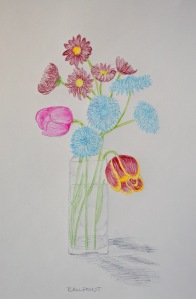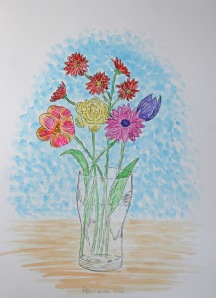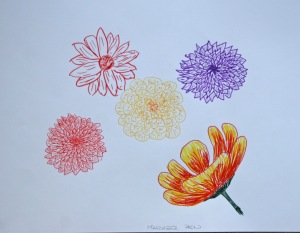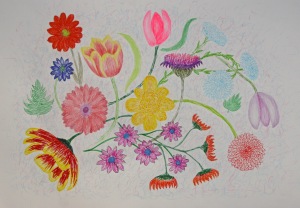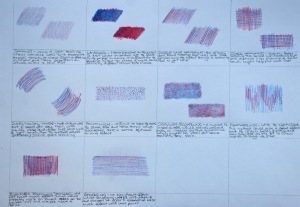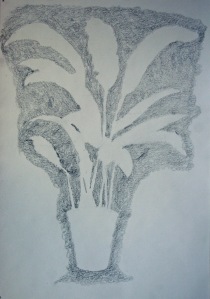Assignment Two
Reflections on Submitted Work
It’s been a hard few months completing this second series of exercises. I am very much better at what I am doing but I perceive myself as being slow at drawing, maybe because I put in a lot of detail.
I can see from other students equivalent work that I have to gain a lot more expression and it would appear that in itself speeds up the process.
However I have learned a huge amount in the past six months and these things will happen in time. I am very pleased with my progress and the before/after comparison is rewarding and encouraging.
Demonstration of Technical and Visual Skills
Materials
The move onto coloured media brought new tools into play and I have practiced them well and I think most of my work with these items reflects this.
Techniques
I still haven’t developed the technique that I would wish and I would like to see development in that respect.
I am concerned that I should learn how to reproduce form accurately first and I still struggle with that a little, particularly drawing objects with no means of reference, i.e. from mind.
Observational Skills
Still improving. Drawing has taught me to examine objects/scenes in finer detail and differentiate between colour/tones/reflections/shadows. A good life skill.
Visual Awareness (looking at life as a painting or drawing)
More often I look at an object/view and analyse how I would draw it. Problem solving.
Also I consider how other artists, from those I have studied on the course, would have reproduced it.
Design and Compositional Skills
I have read a lot about composition and I think I know what it takes to design and compose a good basic picture.
Quality of Outcome
Content
My work has improved since the first series of exercises.
I still make errors but they are diminishing in size and number and I can generally figure out how I could have done better.
Application of Knowledge
There has been more drawing application in Assignment Two thereby extending the use of the various media.
I have learned what these media are individually best at achieving which will give me the confidence to use them more freely.
Presentation of Work in a Coherent Manner
The format in which I present my work, i.e. in a loose leaf binder, seems to me to be neat and logical and makes the exercises readily accessible.
Discernment (keen insight and judgement).
I am acquiring the knowledge of what it takes to effect good work but I am not at the stage where I can necessarily put this knowledge into practice. However it will happen.
Conceptualisation of Thoughts (Thinking with the concepts of pictures and ideas)
I still find drawing what is in my mind, if it is anything other than basic, quite difficult. Whilst I can generally come up with a finished representation it takes a lot of trialling and search lines to get there.
Communication of Ideas
I have little experience of drawing what I see in my mind for others to analyse. No doubt I will be able to do this in time.
I can now understand why artists often cannot progress with, say, a painting and have to leave it until inspiration appears!
Demonstration of Creativity
Imagination/Experimentation/Invention
I have probably answered above. I have in my work produced textures and patterns that I think are original and I am experimenting with these as that is probably how style evolves.
Development of a Personal Voice
At the moment my “voice” is one of trying to reproduce the subject as accurately as possible in form and detail. I think it important for me to establish and consolidate this base. However I wouldn’t like to be stuck there.
I have been given good guidance for such by my tutor but so far there’s not much expressive development on my part.
However I do have a concern that some/much of the modern style of drawing is never going to be my own style, though that’s a matter of taste/preference.
Context
Reflection
Hard work. Stretching myself. Learning a new skill.
I am told practice makes perfect and I have often spent appreciable time working on practice paper before I have undertaken the exercise drawing.
As I become more confident hopefully this time will diminish and I can put pencil straight to exercise paper more readily.
Research
I enjoy the Research Points and I have learned the different styles of these artists which is important
I have acquired all the recommended course books and gradually I am working my way through them.
Critical Thinking (Reasonable, reflective thinking that is aimed at deciding what to believe or what to do)
My learning log plus this text is an honest collation of my personal thoughts on my progress and designs.
My tutor’s guidance will hopefully steer me as to what I want to achieve as well as what is necessary for the course.
Whilst the Module Book is very good a considerable amount of research needs to be done by myself as a beginner in order to acquire the skills the course requires.
I have confidence in the course meaning that I am sure I will develop, complete the course, qualify and become a competent artist.
However starting the course at sixty seven without any ability or previous art training is probably a problem and makes for a slow start but I can see as my confidence grows that the ball will soon start to roll.


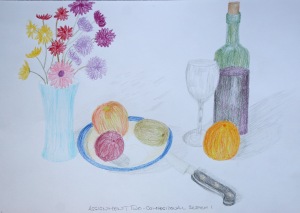
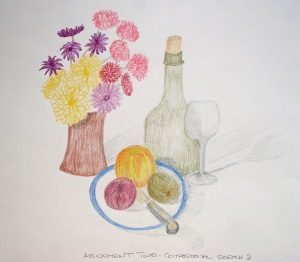
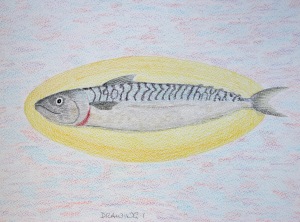

![skeleton[1]](https://geoffreyrowelearninglog.files.wordpress.com/2013/04/skeleton1.jpg?w=300&h=222)
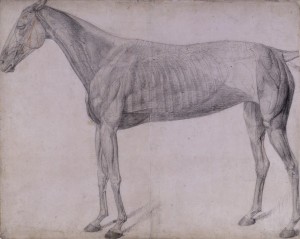
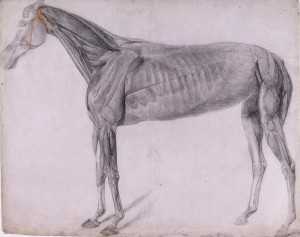
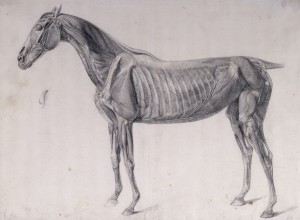
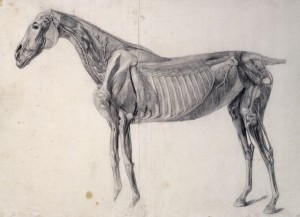
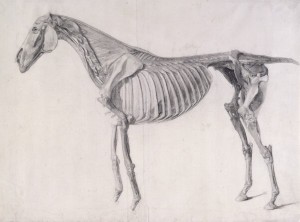
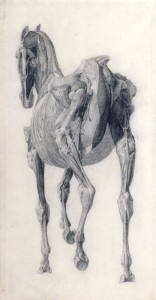
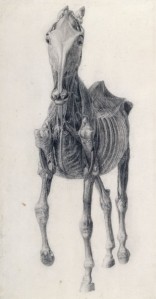
![stubbs-whistlejacket-NG6569-fm[1]](https://geoffreyrowelearninglog.files.wordpress.com/2013/04/stubbs-whistlejacket-ng6569-fm1.jpg?w=249&h=300)
![stu8[1]](https://geoffreyrowelearninglog.files.wordpress.com/2013/04/stu81.jpg?w=300&h=241)
![molly_longlegs_stubbs[1]](https://geoffreyrowelearninglog.files.wordpress.com/2013/04/molly_longlegs_stubbs1.jpg?w=300&h=242)
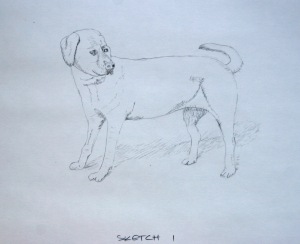
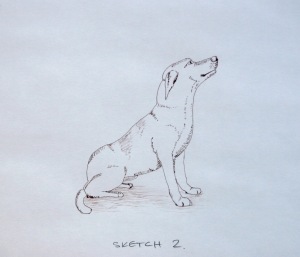
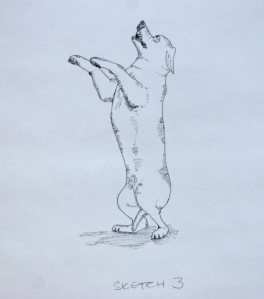
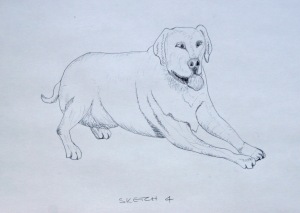
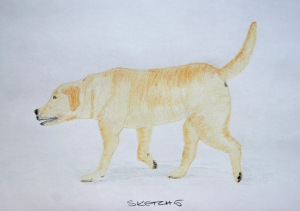

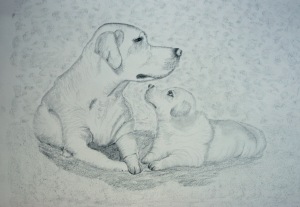
![leonardo-da-vinci-horse-4rider-on-rearing-horse1[1]](https://geoffreyrowelearninglog.files.wordpress.com/2013/04/leonardo-da-vinci-horse-4rider-on-rearing-horse11.jpg?w=300&h=252)
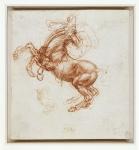
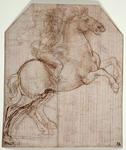

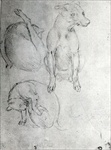

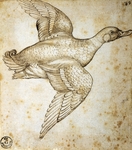
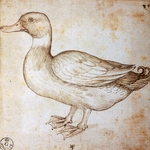

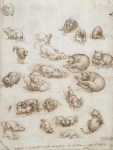
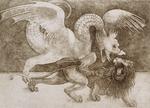

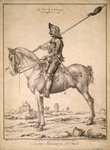
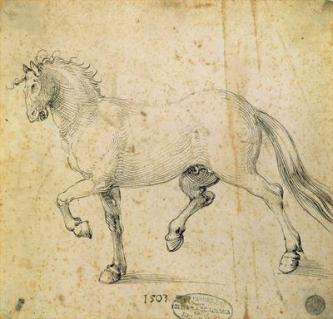
![duerer[1]](https://geoffreyrowelearninglog.files.wordpress.com/2013/04/duerer1.jpg?w=300&h=219)

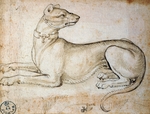
![lion.jpg!Blog[1]](https://geoffreyrowelearninglog.files.wordpress.com/2013/04/lionblog1.jpg?w=266&h=192)
![parrot.jpg!Blog[1]](https://geoffreyrowelearninglog.files.wordpress.com/2013/04/parrotblog1.jpg?w=300&h=244)
![stork.jpg!Blog[1]](https://geoffreyrowelearninglog.files.wordpress.com/2013/04/storkblog1.jpg?w=198&h=300)
![young-steer.jpg!Blog[1]](https://geoffreyrowelearninglog.files.wordpress.com/2013/04/young-steerblog1.jpg?w=246&h=300)
![D%C3%BCrer_rhino[1]](https://geoffreyrowelearninglog.files.wordpress.com/2013/04/dc3bcrer_rhino1.png?w=300&h=249)
